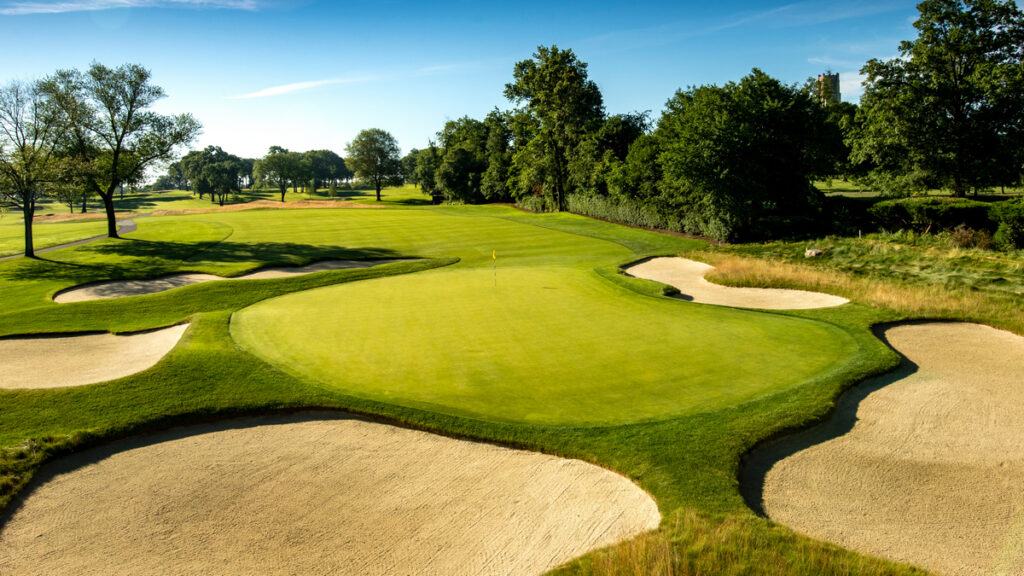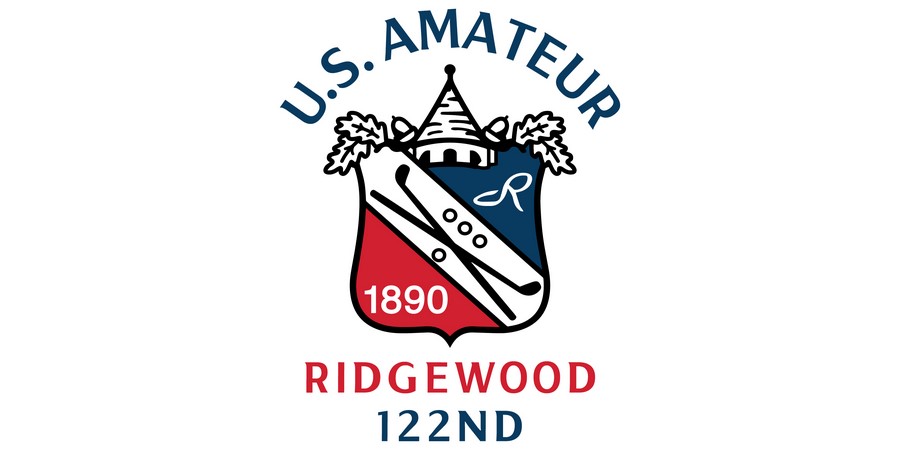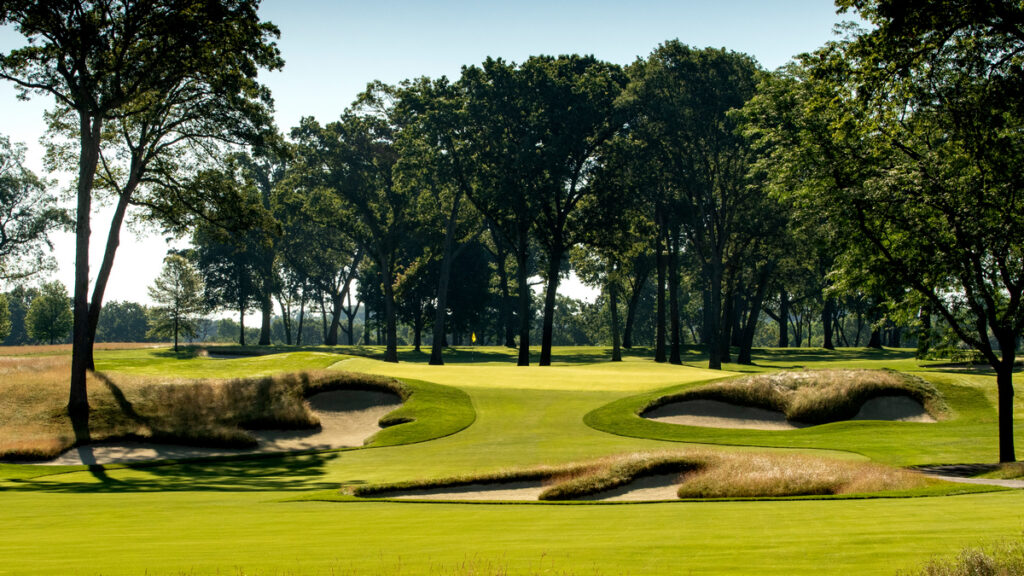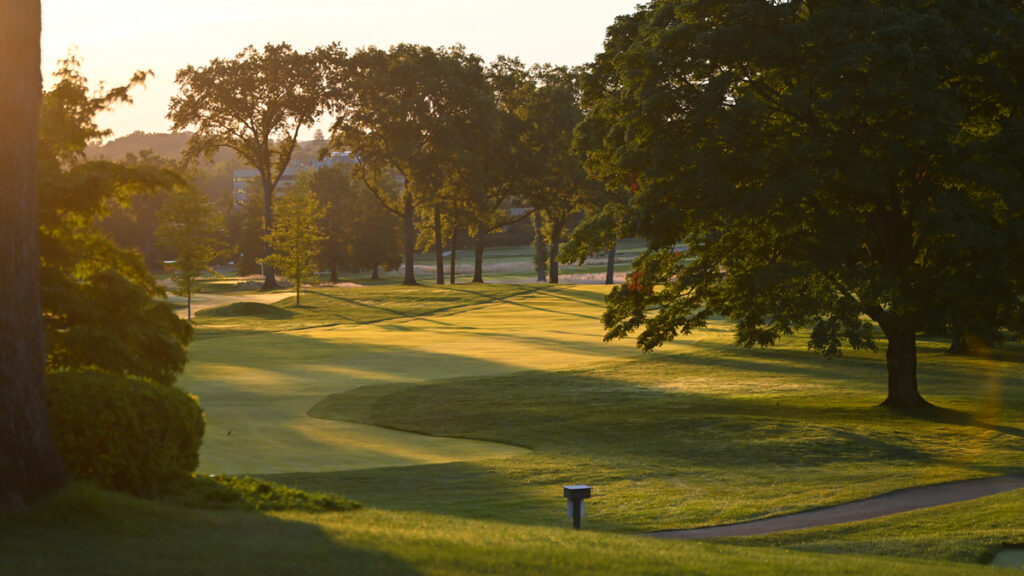
(USGA/Fred Vuich)
Estimated reading time: 7 minutes
Paramus, NJ. For the second consecutive year golf’s most significant amateur event is being staged in the Northeast section of the United States. Last year the iconic Oakmont CC in the greater Pittsburgh, PA area served as the host site. This year the event comes to Bergen County in northern New Jersey.
It was 48 years ago when Ridgewood CC showed its vintage qualities in staging the U.S. Amateur and the host venue showcased a superior A.W. Tillinghast design. The end result producing a fine champion in Jerry Pate who would go on in two years hence to claim the U.S. Open title.
The format for the 2022 championship has changed since the 1974 event. The 312 players competing via a two-day on-site qualifying with one round each at a specially crafted composite 18 at Ridgewood and the other at nearby Arcola CC. After Tuesday’s second round — the field will be cut to 64 players who will then commence match-play Wednesday — culminating with Sunday’s 36-hole scheduled final match.
How well did each course perform on Monday’s opening round? Consider the stroke average as a clear indicator. The average stroke average at Ridgewood was 76.4 on a par of 71 and Arcola was equally stout with a 75.7 average on a par of 70.
Only 18 players in the field shot sub-par rounds on either of the courses.
When one thinks of New Jersey and its intersection with golf the two clubs generally mentioned are the epic Pine Valley and the long time USGA host and PGA Championship venue — Baltusrol Golf Club. The pedigree of Garden State golf extends far deeper than the two stated clubs. This year’s Amateur event marks the 63rd USGA Championship played in New Jersey — the fourth highest total among all 50 States.
This year’s event also adds another chapter in Ridgewood’s storied history.
Now located in Paramus — the club opened in 1929 and provides 27-holes of golf. The U.S. Amateur is using a composite routing — one previously used when the club hosted The Northern Trust event for the opening event of the FedEx Cup Playoffs on the PGA TOUR in 2018 won by Bryson DeChambeau.
In 1935 Ridgewood hosted the Ryder Cup Matches which team USA, captained by Walter Hagen, won decisively. Not until 1957 did the USGA come calling with the Senior Amateur. The 1974 Amateur was especially noted by former USGA Executive Director Frank Hannigan in the association’s Golf Journal publication when he noted how several championship sites that year were designed by the legendary Tillinghast.
In 1990 Ridgewood returned to the forefront in staging an epic Senior Open — won by Lee Trevino and holding off runner-up Jack Nicklaus during the final round. Eleven years later and the Senior PGA Championship came calling and another Hall-of-Famer — Tom Watson — claimed the title.
Starting in 2008 Ridgewood would take various turns (2010, 2014 and 2018) — in staging the opening event for the FedEx Cup Playoffs under the banner of sponsors as The Barclays and The Northern Trust respectively.

Ridgewood has been smartly updated by architect Gil Hanse in recent years. The massive trees that line the fairways have had their canopies smartly trimmed and the range of holes is an electric mixture of both long and short holes. The most noted being the devilish short par-4 12th — nicknamed “five and dime” by former assistant club professional Byron Nelson who stated he used a five-iron and then wedge when playing the hole. Nelson would go on to higher golf heights in winning five major championships and membership in the sport’s Hall of Fame.
The various hosting of key events has also raised the profile of Ridgewood. The club is listed among the top 100 courses in the United States by various publications — most notably Golf Digest and Golf Magazine.
The pedigree of the golf course is no less matched with the storied clubhouse — a stunning Tudor creation by the talented Clifford C. Wendehack — the man responsible for other noted designs at Winged Foot, Bethpage, Mountain Ridge and North Jersey, among others.

Consider that Ridgewood during the playing of the 1974 U.S. Amateur played to a grand total of 6,754 yards. This year’s event, courtesy of improvements to golf ball and club technology will have the layout play to a max of 7,487 yards / Par-71.
In 1979 the USGA implemented a 36-hole on-site stroke play format before commencing to a final 64-person field for match play. Assisting Ridgewood in the qualifying portion is Arcola CC.
Opened for play in 1909, Arcola is roughly three miles from Ridgewood and the original 18 was designed by Herbert H. Barker. The course was renovated in 1930 by Williard G Wilkinson, an assistant to Tillinghast and, again, in the late 1950s by Robert Trent Jones, Sr. Interestingly, when the Garden State Parkway roadway was being routed the possibility existed that Arcola would need to move elsewhere. Fortunately, that did not happen.

In recent years Arcola went through a major makeover. Architect Steve Smyers updated the layout in 2019 but the hiring of superintendent Paul Dotti in 2009, provided the much-needed emphasis in detailing all aspects and raising the overall profile of the club dramatically.
“The first thing we had to do when I got here was address drainage. Then it was lengthening the course, rebuilding bunkers and adding strategic bunkers. We’ve done a lot of tree removal to improve vistas and improve growth. All of it was to get the course to play and look better. That was our vision right from the beginning,” Dotti said.
Arcola is no stranger to hosting various competitions through the years – the most notable being the Arcola Club Invitational. This event included some of the most talented amateurs in the country. Various New Jersey events and other regional ones have also been hosted by the club.

(Kathryn Riley/USGA)
Arcola is also home to a deep roster of talented members who compete rigorously against one another and during team events held in NJ have fared very well.
Total distance for Arcola now is at 7,256 yards for the Amateur and playing to a par of 70. The clubhouse is situated on the highest point of the property and on clear days provides stunning views of the Manhattan skyline in all its glory.
Coming forward and being part of the U.S. Amateur will clearly send a strong signal beyond the immediate New York / New Jersey metro area on the qualities of the course and could well prove to be the springboard for other events to be staged there.
